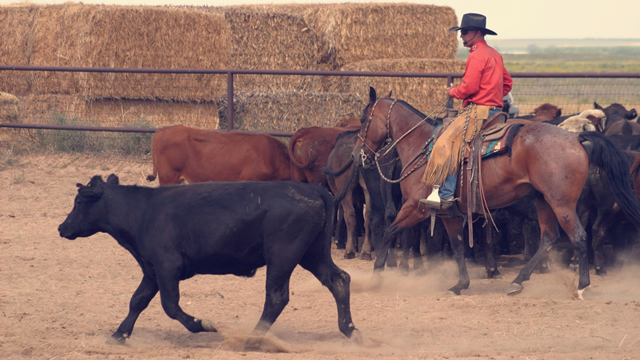Written by Martin Black
This article originally appeared in Eclectic Horseman Issue No.54
After returning from The World’s Greatest Horseman competition, I found it interesting how the contestants handled their cattle in the fence work.
After a lifetime of working cattle and studying how other people handle cattle; how and why they do what they do, I’m sure that it doesn’t matter to the cow whether it’s at a show or on the ranch. When it is set up a certain way by the rider, it is going to respond accordingly.
Position doesn’t always give you a consistent result without analyzing the attitude, temperament and endurance of the cow. The more the cattle are stressed before they come into the arena, the more it will affect them. Reading previous cattle may give you some idea of how yours may work. If they are dehydrated, they will probably be wilder. If they are not relaxed and breathing deep in the back, they will run out of air quicker in the arena and when they don’t get enough oxygen to the brain, their decision making isn’t as good.
A common mistake made by all levels of competitors in the boxing is to get too close to the cow too soon and show their horse off without considering how it’s affecting the cow. This is your free time to shape the cow up for the rest of the run physically and mentally. There is no pattern required and seldom is any credit given in the boxing, but there is a lot of room to gain penalties so this is when it pays for you to be cow smart.
The important thing is to read the flight-zone of the cow, how far away you can be to get the cow to respond. If you can be a third of the way down the arena and the cow is busy responding to you, that may be close enough to start with. Then when you can get control and some rhythm, begin to work in closer. But if you are too close and the cow feels too threatened, it is going to look for a place to escape the trap you have it in and it will try to run past you or it will just run the fence looking for a hole.
The key is to work the cow without causing it to panic. No animal has a thought process while they are panicked; that’s the difference between one that’s panicked and one that is not. We want them to be thinking so we can read them.
If the cow will come toward the middle of the arena far enough so we can have an opportunity to drive it back to the end and get it to turn back and forth as it is moving forward and away from us, that would be really good.
It doesn’t always work to implement mechanical patterns and not read and prepare the cow for what we want it to do the rest of the run. The rest of the run is what will determine your score, and the boxing can have a huge influence.
The remainder of the run would be best if the cow continually turned away from us. If it turns away from us and into the fence, that will give us more time to change sides and stay on the fence to set up the next turn. Then while circling we don’t want the cow to be looking toward us, we want it to be moving forward and away. So any opportunity we can shape the cow in the boxing to turn away can help to prepare it for the fence turns and the circling.
When the cow realizes it can turn away and pick us up with the other eye, this can be the first step to a better run. When we are driving the cow, as it prepares to turn away is the time we want to stop and be still until it sees us with the other eye, then turn our horse and shape things up to turn the cow again. If we turn too soon it may keep the cow’s attention and it may not want to take its eyes off us.
If the cow feels too much pressure when stopping, it will also look at us and turn into us and there is no place in the rest of the run that will be a positive move. In my opinion credit should be given for the cowboy that can shape the cow to turn away vs. the cow that turns into the horse.
This article originally appeared in Eclectic Horseman Issue No.54


